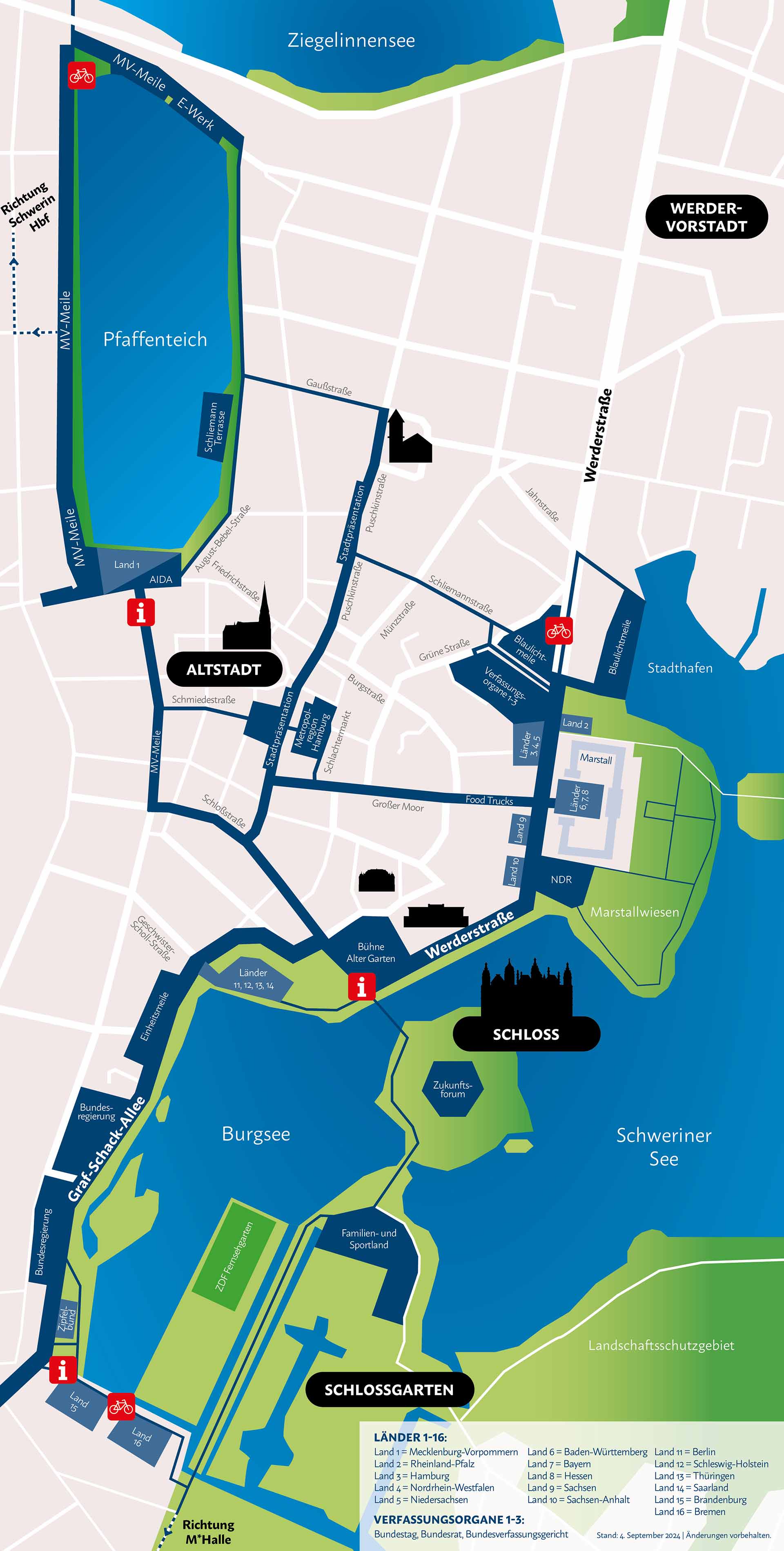
SAXONY-ANHALT
#MODERNTHINKING
»Guten Tag«

Saxony-Anhalt is an up-and-coming state with a rich cultural heritage and fascinating history. Here, in our region, over the centuries, clever minds have come up with world-changing ideas, ranging from the Nebra sky disk to Luther’s Reformation and the Bauhaus.
Modern-day Saxony-Anhalt is a pioneer in renewable energies and a model region for green hydrogen. The Leuna Chemical Park is one of the largest innovative construction sites in Germany, the German Aerospace Centre is researching future mobility at the Cochstedt drone airport and Saxony-Anhalt is being transformed into a hub of the digital world with the planned Intel factory.
This is where the heart of German unity beats. Heinrich I (Quedlinburg) and Emperor Otto I (Magdeburg) provided ideas and introduced changes that were decisive for the formation of a German nation. The “first chancellor of unity” – Otto von Bismarck – was born here. Now the nationwide Future Centre for German Unity and European Transformation is being built in Saxony-Anhalt. We intend to continue doing what we’re historically great at: providing ideas and momentum for a common future in Europe.
#moderndenken
5 Highlights
SAXONY-ANHALT

The Nebra Sky Disk

Bauhaus Dessau

Future Centre in Halle (Saale)

Digital future hub

Ferropolis – The City of Iron
SAXONY-ANHALT AT THE FESTIVAL OF GERMAN UNITY
Powerful history, great ideas and a digital future – plus music and sparkling beverages. Welcome to the stand of Saxony-Anhalt at the Festival of German Unity. We invite you to meet Saxony-Anhalt: from global history to microchips!
Dive into the virtual world of the Sky Disk; fly over the Pömmelte ring sanctuary in a VR art installation, walk through Bronze Age villages and float in a solar barque through three-dimensional space.
Modern-day Saxony-Anhalt has for centuries offered the space to turn ideas into reality: from the Sky Disk to Martin Luther or the Bauhaus. The first German steam engine was built here, colour film was invented here, and the world’s first passenger aeroplane, built by Junkers, took off here.
And there are plenty of ideas and examples for #modernthinking in the present. From renewable energy to green hydrogen, from the Leuna Chemical Park to the chip manufacturer, from the drone airport to the Future Centre for German Unity and European Transformation.
Find out about the up-and-coming federal state and its major projects for the future. We have a lot planned! Want to join us? Families and children in particular love the great quality of life here and feel at home in Saxony-Anhalt.
A tip for lovers of nature and wine enthusiasts: from picturesque floodplain landscapes to the Elbe cycle path, the Harz Mountains with the Brocken to the beautiful wine region of Saale/Unstrut, there is a lot to be discovered in Saxony-Anhalt.
FOR GERMAN UNITY DAY 2024:
THE MINISTER-PRESIDENT OF SAXONY-ANHALT
Dr. Reiner Haseloff

The celebrations to mark German Unity Day are an impressive reflection of the cultural diversity of our country and the strength of German federalism. The maritime motto of this year’s festival also serves to highlight our unity in plurality. United, we will set sail for a successful future and a country with a good quality of life for all. In this spirit, I greatly look forward to many pleasant and productive encounters on the 3rd of October in Schwerin.
Dr Reiner Haseloff, Minister-President of Saxony-Anhalt
